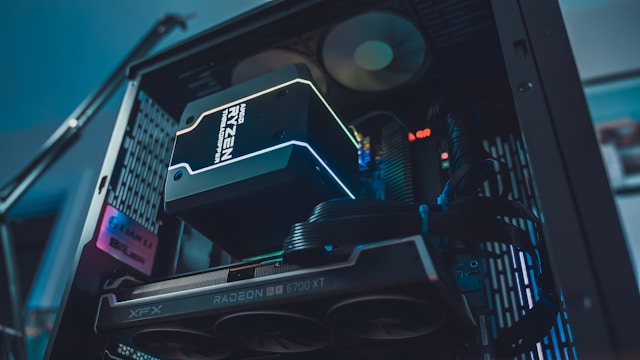Is your laptop running slow or running out of storage? Upgrading your RAM and SSD can significantly improve performance, allowing for faster multitasking, quicker boot times, and more storage space. Whether you’re a gamer, professional, or casual user, a laptop RAM and SSD upgrade is one of the best ways to boost speed without buying a new device. In this guide, we’ll walk you through checking compatibility, preparing for the upgrade, and installing new memory and storage.
Checking Compatibility
Before purchasing new RAM or SSD, it’s essential to determine whether your laptop supports an upgrade.
How to Check RAM Compatibility
-
Use System Tools
- On Windows: Open Task Manager (Ctrl + Shift + Esc) > Performance > Memory to check RAM usage and available slots.
- On macOS: Go to Apple Menu > About This Mac > Memory to view RAM details.
-
Check RAM Type
- Determine whether your laptop supports DDR3, DDR4, or DDR5 RAM.
- Use tools like CPU-Z or Crucial System Scanner to identify compatible RAM modules.
How to Check SSD Compatibility
-
Identify Your Current Storage Type
- Open Disk Management on Windows or About This Mac > Storage on macOS.
- Determine if your laptop has a SATA SSD, NVMe SSD, or traditional HDD.
-
Check Available Slots
- Some laptops have an extra slot for an additional M.2 NVMe SSD or SATA SSD.
- Refer to your laptop’s manual or manufacturer website for upgrade specifications.
Preparing for the Upgrade
Before replacing your laptop RAM or SSD, gather the necessary tools and take precautions:
Tools Required
- Small Phillips-head screwdriver
- Anti-static wrist strap (to prevent electrostatic damage)
- USB drive for OS backup (for SSD replacement)
Backup Your Data
If you’re upgrading your SSD, back up important files using an external drive or cloud storage. You can also use cloning software like Macrium Reflect or EaseUS to duplicate your existing system to the new drive.
How to Upgrade RAM
-
Power Down and Unplug Your Laptop
- Turn off the laptop and remove the battery (if applicable).
-
Open the Laptop’s Back Panel
- Use a screwdriver to remove the screws securing the back panel.
-
Remove Old RAM Modules
- Locate the RAM slots, release the clips, and gently remove the old RAM.
-
Install the New RAM
- Align the gold connectors with the slot and firmly press until it clicks into place.
-
Reassemble and Power On
- Close the back panel, secure the screws, and turn on your laptop.
- Check the new RAM in Task Manager > Performance > Memory on Windows or About This Mac > Memory on macOS.
How to Upgrade SSD
-
Open the Laptop and Locate the SSD Slot
- Unscrew the back panel and find the SATA or M.2 SSD slot.
-
Remove the Existing SSD
- Unscrew and gently slide out the old SSD (if replacing).
-
Install the New SSD
- Insert the new NVMe or SATA SSD into the slot at an angle and secure it with a screw.
-
Reassemble and Boot the Laptop
- Close the panel and power on the laptop.
-
Initialize the SSD
- On Windows: Open Disk Management > Initialize Disk > Format as NTFS.
- On macOS: Use Disk Utility > Erase > APFS or Mac OS Extended format.
-
Reinstall or Migrate the OS
- If you cloned your previous drive, boot as usual.
- If installing a fresh OS, use a USB recovery drive to reinstall Windows or macOS.
Post-Upgrade Optimization
After upgrading, optimize your RAM and SSD for better performance:
- Enable XMP Profiles (for high-performance RAM, available in BIOS).
- Update SSD Firmware for better efficiency and longevity.
- Defragment HDDs (not needed for SSDs).
- Move large files to an external drive to free up space.
Conclusion
Upgrading your laptop RAM and SSD is one of the most cost-effective ways to improve performance. Whether you need faster speeds for gaming, work, or everyday tasks, installing additional memory and storage can make your laptop feel brand new. Follow this guide to upgrade your system, and enjoy a smoother computing experience.





